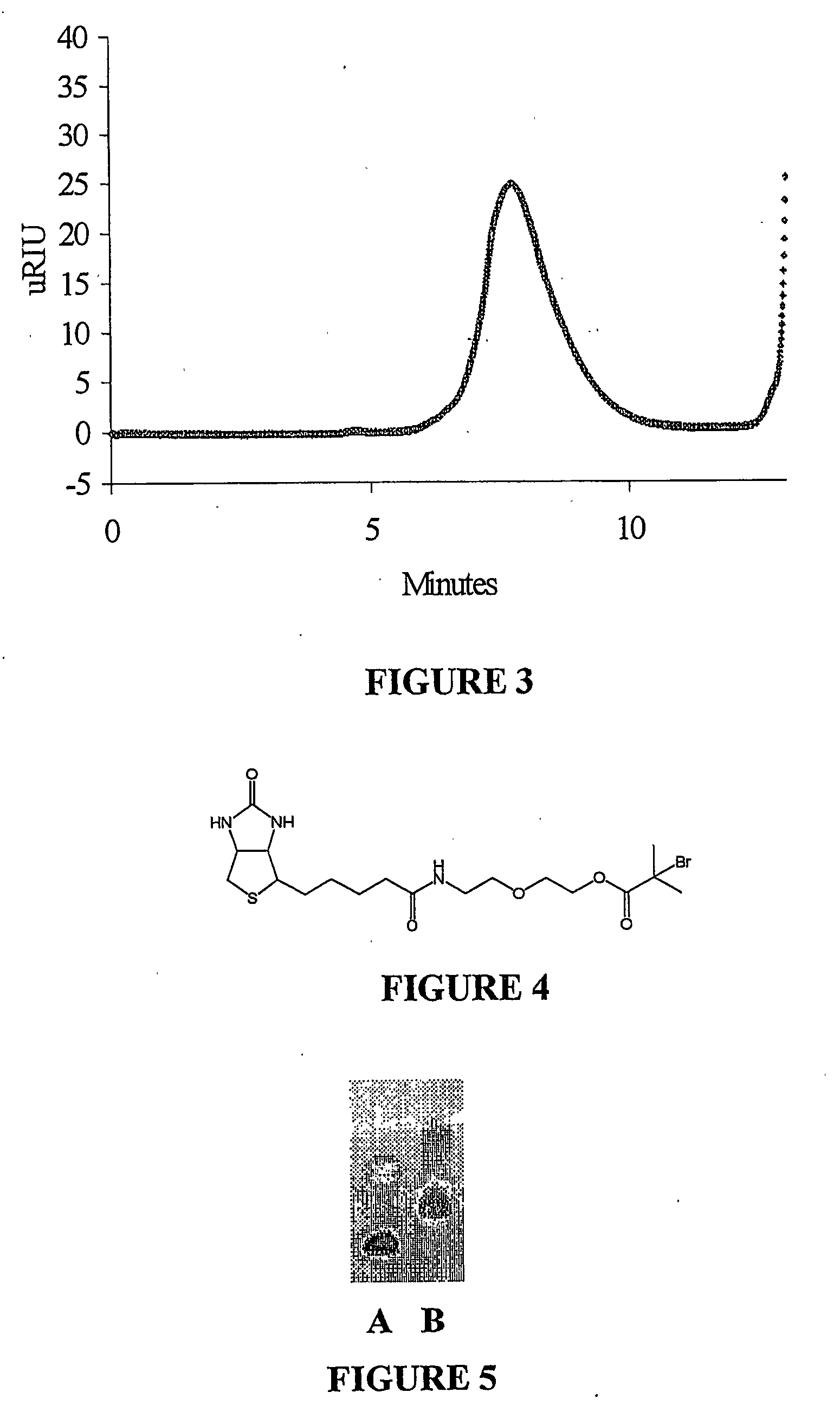Biomacromolecule Polymer Conjugates
- Summary
- Abstract
- Description
- Claims
- Application Information
AI Technical Summary
Benefits of technology
Problems solved by technology
Method used
Image
Examples
example 1
Polymerization from Modified Bovine Serum Albumin (FIG. 1)
[0029] Bovine serum albumin (BSA) was modified at a single site to enable the polymerization directly from the albumin. A single free cysteine within the protein was modified to have a bromoisobutyrate functionality suitable for initiation of radical polymerization as shown in FIG. 1. The initiator precursor, propyl-mercaptopyridine 2-bromoisobutyrate (1) reacts efficiently with any protein, enzyme, or antibody that, naturally or by engineering, contains a free cysteine, and thus represents a general approach. Mass spectrometry analysis of the resulting BSA initiator (BSA-I) demonstrated that the albumin was modified with no more than one molecule of initiator per BSA molecule.
[0030] Polymerization was then accomplished using a radical polymerization technique (atom transfer radical polymerization, ATRP) that can result in polymers with narrow molecular weight distributions and programmed molecular weights. BSA-poly(NIPAAm)...
example 2
Polymerization from Streptavidin Modified with a Biotinylated Initiator in the Presence of Non-Interacting Initiator
[0035] Polymerization from a protein in the presence of an added initiation agent was undertaken to demonstrate that the technique is suitable for small scale procedures, for example when only small quantities of protein are available. As an illustrative example, streptavidin was interacted with the bromoisobutyrate-modified biotin initiator shown in FIG. 4. This biotin initiator binds with very high affinity to streptavidin. Polymerization of NIPAAm was initiated from the modified streptavidin with simultaneous initiation from a non-interacting bromoisobutyrate-modified solid phase resin. The non-interacting initiator does not bind to the protein, and the polymer grown from this initiator is not bound to the protein. Polymerization from streptavidin was evidenced by the higher molecular weight of the conjugate, as shown by gel electrophoresis (FIG. 5).
[0036] Initiat...
PUM
 Login to View More
Login to View More Abstract
Description
Claims
Application Information
 Login to View More
Login to View More - R&D
- Intellectual Property
- Life Sciences
- Materials
- Tech Scout
- Unparalleled Data Quality
- Higher Quality Content
- 60% Fewer Hallucinations
Browse by: Latest US Patents, China's latest patents, Technical Efficacy Thesaurus, Application Domain, Technology Topic, Popular Technical Reports.
© 2025 PatSnap. All rights reserved.Legal|Privacy policy|Modern Slavery Act Transparency Statement|Sitemap|About US| Contact US: help@patsnap.com



